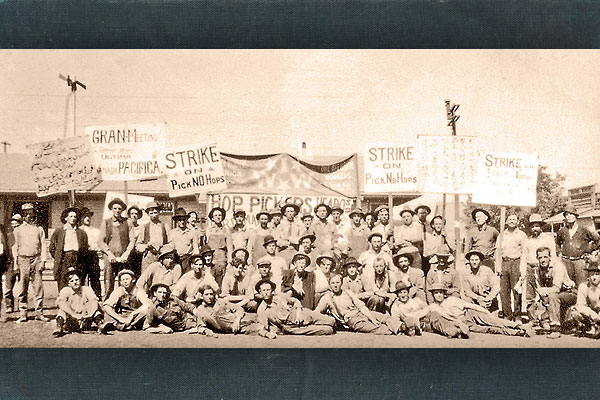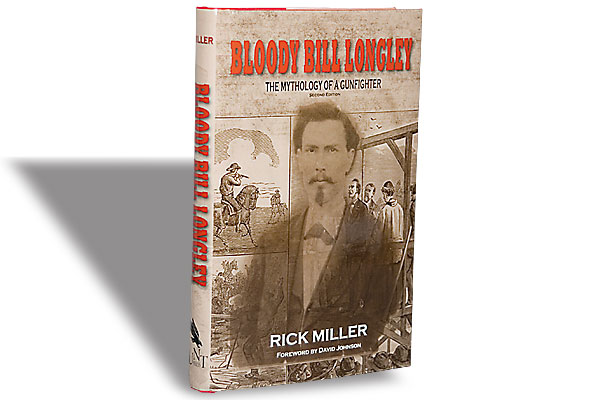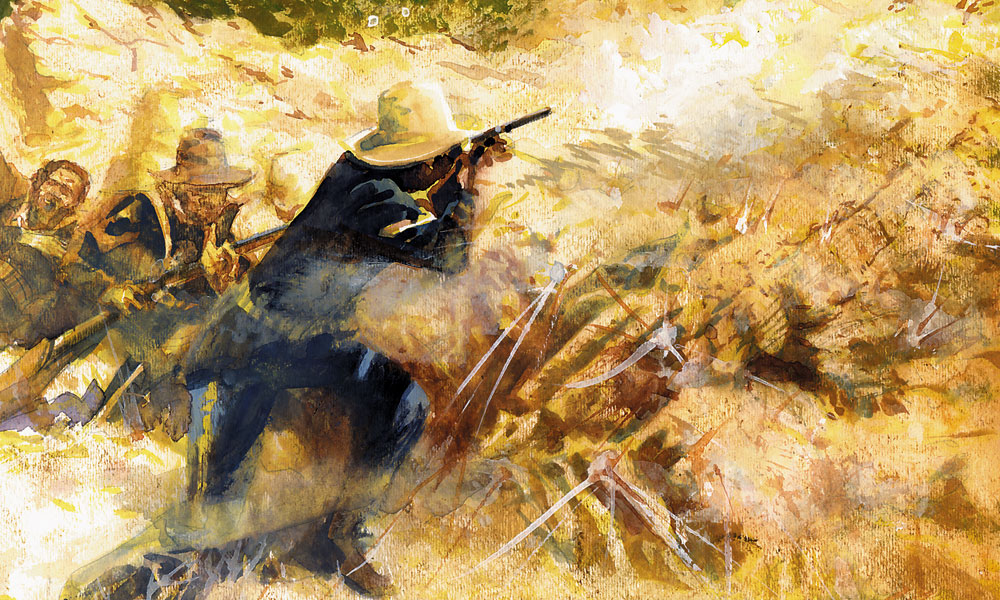 The conflicts of Old West mining wars between labor and business spread to the fields of California agriculture in the latter stages of that era. The so-called Wheatland Hop Riot opened the ball on August 3, 1913.
The conflicts of Old West mining wars between labor and business spread to the fields of California agriculture in the latter stages of that era. The so-called Wheatland Hop Riot opened the ball on August 3, 1913.
In the region northeast of Sacramento, field temperatures had hit the 120s—tough working conditions for the migrants harvesting hops, the green plant (related to hemp) used in brewing beer.
The work was hard, and the season short (by the end of August, the migrants would be moving on). The Durst Ranch, the largest agricultural employer in California, needed about 1,500 workers; nearly double showed up. Most workers made less than $1.50 a day—big pay in a time of national recession.
Conditions were hellish. Workers had to buy water (contaminated by acetic acid) for five cents, plus food and other supplies from a price-gouging company store. Dysentery was rampant, with less than a dozen toilets available for workers. Garbage and refuse cluttered the area. (In all fairness, the situation at the Durst Ranch was not unusual for California operations that hired migrants.)
Richard “Blackie” Ford, a former organizer for the radical Industrial Workers of the World, decided to mobilize the Durst Ranch workers to get higher pay and better conditions. He presented a list of demands to Durst on August 3. The rancher agreed to all of them—regular ice-water breaks (at no charge), more toilets and so forth. But he wouldn’t boost the pay.
Ford said that wasn’t good enough; some accounts state Durst responded by slapping Ford in the mouth. The labor man then went to a nearby platform to harangue the workers. Durst went into town to get the authorities.
The rancher returned with a couple carloads of men, including Yuba County Sheriff George Voss, Deputy Eugene Reardon and District Attorney Ed Manwell. They arrived shortly after five p.m., and Ford had the crowd worked up.
Just what happened next depends on which side you believe. The authorities and Durst claimed that some workers had attacked them. Ford and the migrants said the lawmen had opened fire on them. Either way, a melee ensued.
When it was done, Manwell, Reardon and two workers were dead. Sheriff Voss was severely injured, as were an untold number of folks on both sides. Ford was on the run, and most of the workers had scattered to the four winds. The day became known as “Bloody Sunday.”
Ford and organizer Herman Suhr were arrested. Neither participated in the attacks, but officials accused them of inciting the violence and charged them with murder.
The trial took place in January 1914 in nearby Marysville. Most locals (including jury members) weren’t sympathetic to the union or the migrants. Both defendants were found guilty of second-degree murder and given life sentences. The proceedings received international press coverage.
After the incident, the Durst Ranch gave in to all the demands, including the higher pay. The hop crop was brought in without any further trouble.
Ford was pardoned in 1924, and Suhr paroled two years later.
Today, 100 years after the fact, the Hop Riot is pretty much forgotten. A plaque in Wheatland, California, marks the spot, but it’s on private land and few are given permission to visit.
Yet ever since, some labor organizers have used that “Bloody Sunday” to strike a chord in the hearts of migrant workers across the country.





